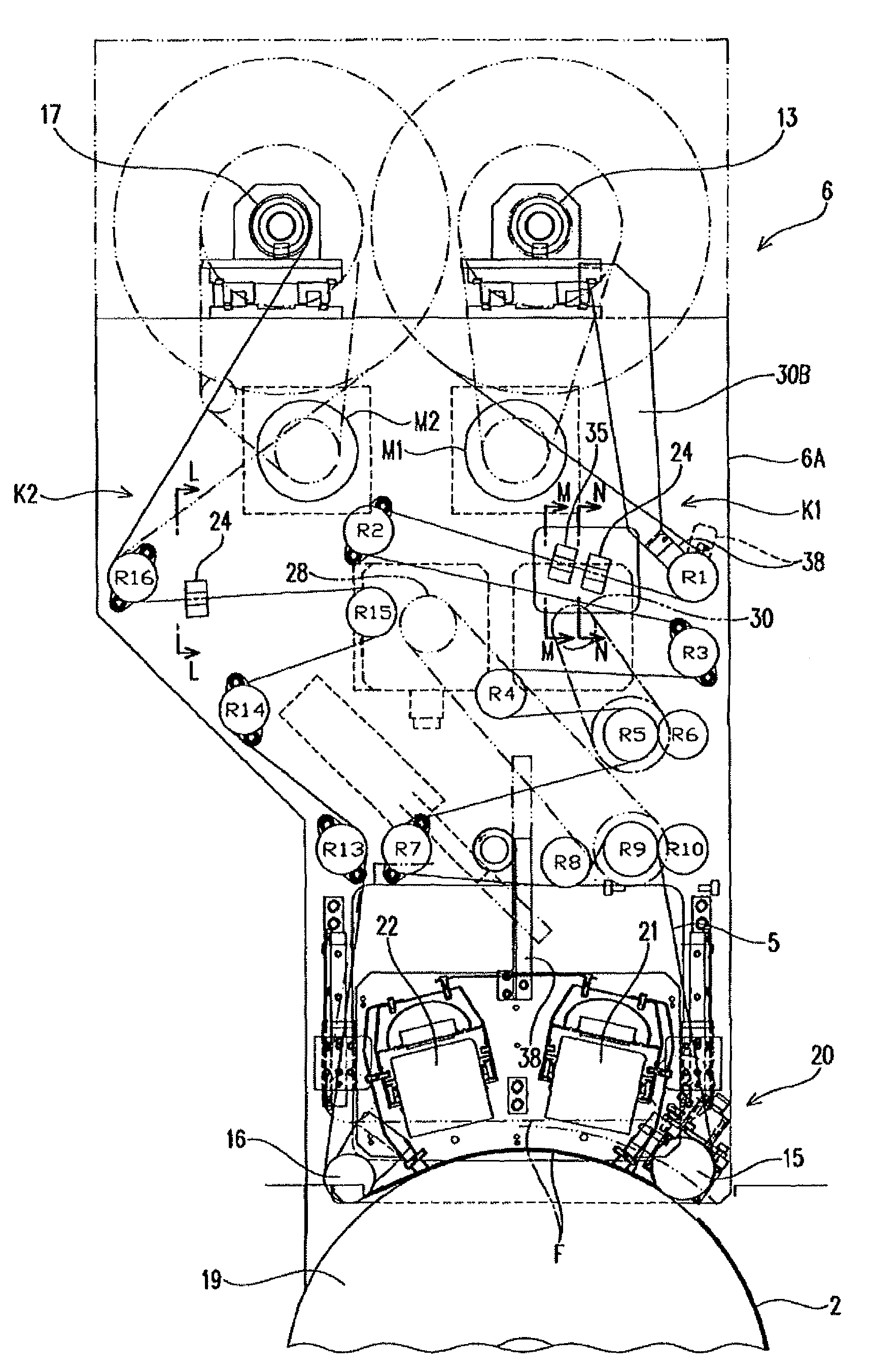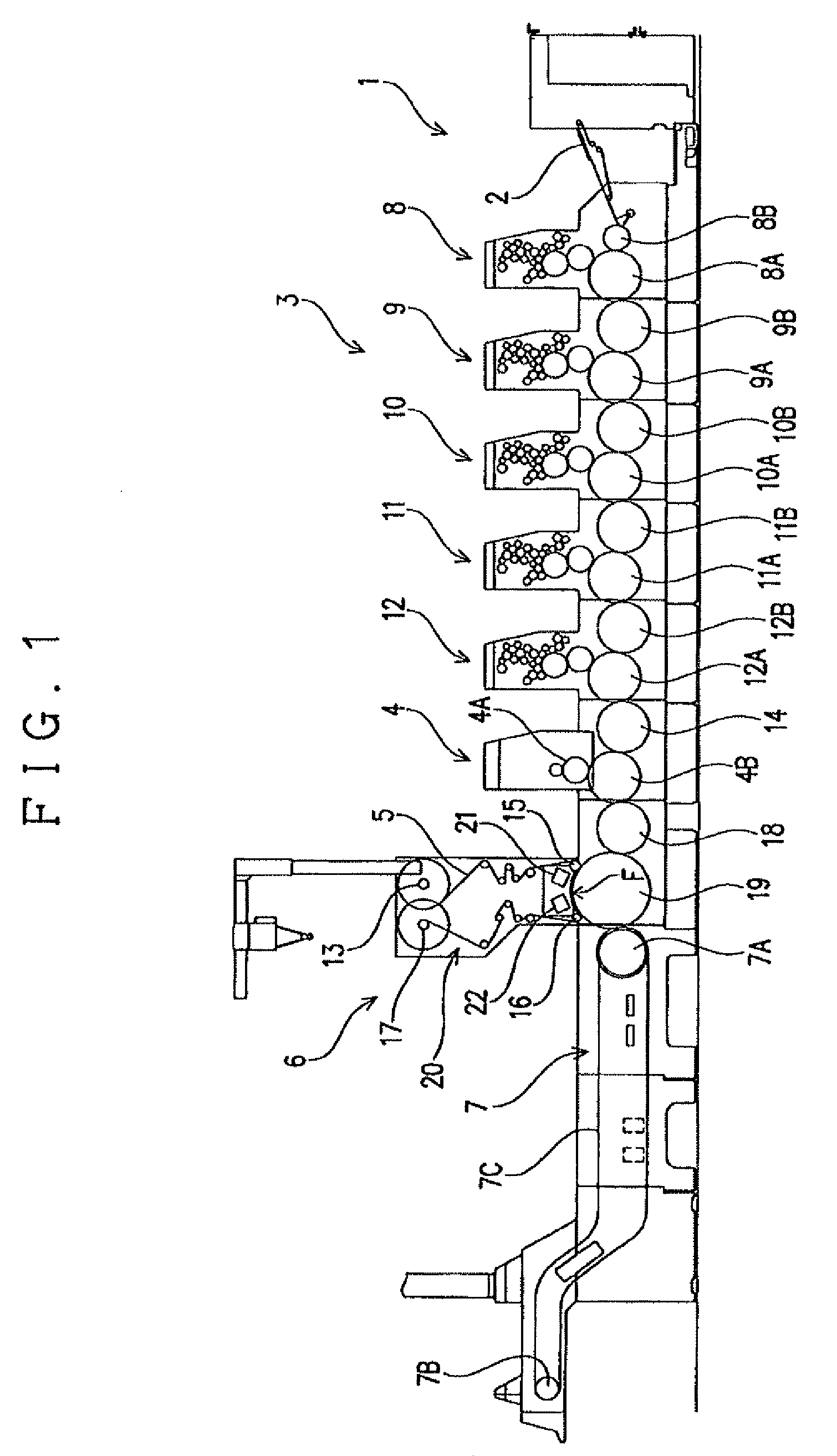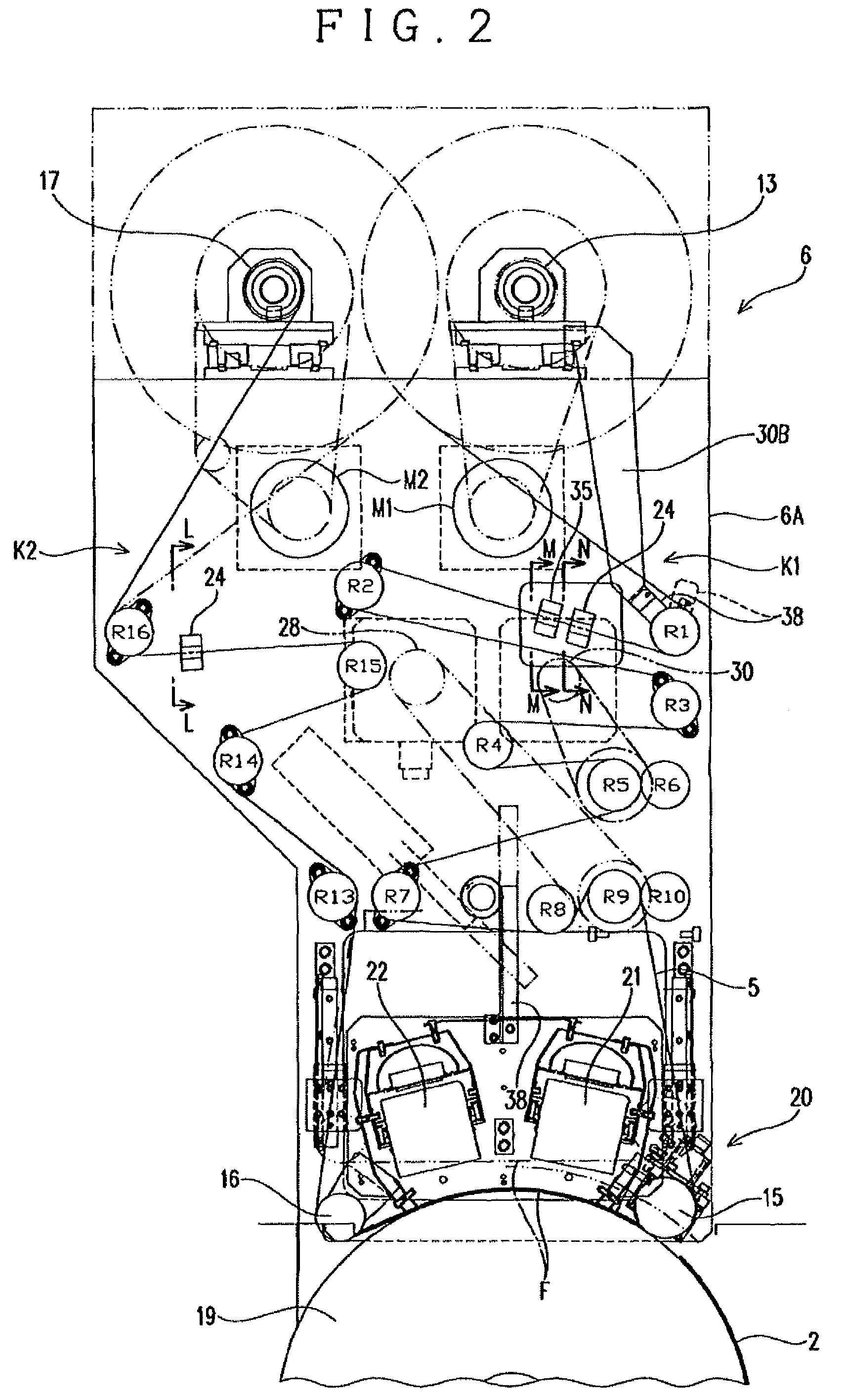Method of winding up transfer film and device for performing transfer printing on printed sheets of paper
a technology of transfer film and printing sheet, which is applied in the direction of transportation and packaging, lithography, manufacturing tools, etc., can solve the problems of transfer film damage, and achieve the effect of improving operability
- Summary
- Abstract
- Description
- Claims
- Application Information
AI Technical Summary
Benefits of technology
Problems solved by technology
Method used
Image
Examples
Embodiment Construction
[0025]FIG. 1 shows an example of a printing press incorporating a transfer device 6 capable of treating the printed surfaces of printed sheets of paper by varnishing and gloss-finishing the printed surfaces with a resin varnish and transferring thereon gold foil, embossed patterns, hologram patterns, and the like. This printing press includes a sheet feeder section 1, a printer section 3, a varnish applicator section 4, a transfer section F, and a sheet discharge section 7. The sheet feeder section 1 feeds sheets of paper 2 one sheet at a time by means of a feeder device, a sheet separator device, and the like from a sheet stack table. The printer section 3 performs five-color printing on the sheets 2 fed from the sheet feeder section 1. The varnish applicator section 4 applies (coats) an ultraviolet curable resin varnish (also simply referred to as “a varnish”) onto the sheets 2 that have been printed in the printer section 3. The transfer section F presses a transfer film 5 made o...
PUM
 Login to View More
Login to View More Abstract
Description
Claims
Application Information
 Login to View More
Login to View More - R&D
- Intellectual Property
- Life Sciences
- Materials
- Tech Scout
- Unparalleled Data Quality
- Higher Quality Content
- 60% Fewer Hallucinations
Browse by: Latest US Patents, China's latest patents, Technical Efficacy Thesaurus, Application Domain, Technology Topic, Popular Technical Reports.
© 2025 PatSnap. All rights reserved.Legal|Privacy policy|Modern Slavery Act Transparency Statement|Sitemap|About US| Contact US: help@patsnap.com



